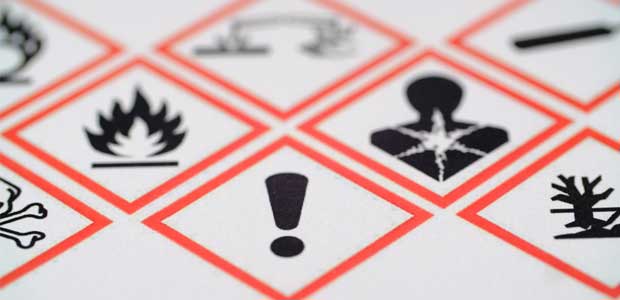
Hazard Communication: Don’t Miss the Forest for the Trees
The Hazard Communication Standard is performanceoriented, meaning achieving the standard is the measure of compliance.
- By Tom Burgess
- Apr 01, 2022
OSHA’s Hazard Communication Standard (HCS) demands attention to details, including making sure Safety Data Sheets (SDS) are available, providing training and addressing chemical container labeling.
While attention to these details is vital, what I often see lacking is attention to the purpose of the Hazard Communication Standard itself. The intent of the OSHA standard is to ensure that the millions of employees who are exposed to hazardous chemicals in their jobs understand the hazards and how to protect themselves.
Ultimately, meeting both the intent and compliance with the HCS means that employees must know the hazards and precautions. Hazard evaluation, SDS, labeling, written programs, information and training are all key elements intended to achieve this goal.
The HCS is performance-oriented, meaning achieving the standard, including employee knowledge, is the measure of compliance. This is intended to give employers more flexibility in how they achieve compliance, but can also make it more challenging to manage, since having a written program, labeling, SDS and training does not guarantee compliance.
If I am auditing or if OSHA is inspecting your facility for compliance, worker interviews will be an important part of the assessment. Do workers know what chemicals they are or may be exposed to? Do they understand the potential health risks? Do they know, and are they using, controls or personal protective equipment? Do they know what to do if there is a spill or they are accidentally overexposed? If your workers can’t answer the questions, you are not in compliance, even if you have training and other documentation.
I remember an OSHA inspection at a chemical plant where I worked in New Jersey. We had a dusty operation where workers were required to use coveralls and respirators. The inspector approached a worker to ask questions. Somehow, it seems, an inspector or auditor always finds the last person on the floor that you want them talking to. Our compliance was based in part on whether or not this specific worker understood what he was working with and the precautions.
It didn’t matter what language he spoke, his education level or experience, it was our responsibility to make sure he was knowledgeable. In this case I was very happy when the worker gave simple, clear explanation of what he was doing, what he was working with, the ventilation controls and protective equipment. This wasn’t just about compliance. It was clear that he was protecting his health rather than just following a rule.
Training is the most common area where I see programs missing the intent of the standard. This especially occurs when online or off-the-shelf training programs are used. Many training sessions spend a lot of time reviewing the elements of the standard, the elements of a label, and maybe even details on each of the 16 sections of SDS. However, this is not hazard communication training.
Hazard communication information and training must address the specific chemical hazards of your workplace. Since this is performance oriented, you can use a lot of creative ways to accomplish this. Classroom training usually has limited retention and effectiveness. Training can be supplemented with short toolbox talks, posters or other visual information, or hazard information integrated into procedures. If it’s getting the message across to your workers, then it is meeting both the intent of and compliance with the standard.
To be able to communicate hazards and precautions to workers also means that we need some process to assess what our chemical hazards are, the health risks and determine what precautions are needed.
As a Certified Industrial Hygienist (CIH), I use an industrial hygiene exposure assessment process. The complexity of the assessment will depend on the nature or your operations and chemical exposures. For many operations that handle small amounts of chemicals, the exposure assessment may be not much more complicated than reviewing SDS or other information and doing a walkthrough to observe chemical use and exposure. More complicated operations or chemical exposures with the potential for significant health risk may need a detailed assessment and sampling.
Assessing exposures is also important for compliance with other OSHA standards like personal protective equipment and respiratory protection. These standards require an assessment of hazards to determine the appropriate protective equipment.
The Hazard Communication Standard, and your organization’s program, is not about the procedure and SDS binders on the shelf. It’s there to protect your workers from chemical hazards. Understand your hazards, be creative with communication, and, of course, always take care of the compliance paperwork.
This article originally appeared in the April 2022 issue of Occupational Health & Safety.